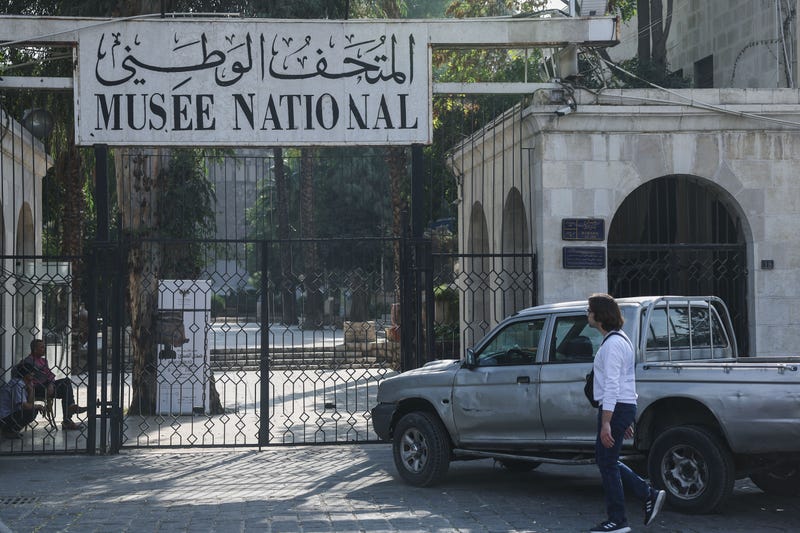
DAMASCUS, Syria (AP) — Investigators believe that the theft of several ancient statues dating back to the Roman era from Syria’s national museum was likely the work of an individual, not an organized gang, officials said Wednesday.
The National Museum of Damascus was closed after the heist was discovered early Monday. The museum had reopened in January as the country recovers from a 14-year civil war and the fall of the 54-year Assad dynasty last year.
On Wednesday, a security vehicle was parked outside the main gate of the museum in central Damascus while security guards stood nearby. People weren't allowed in because of the ongoing investigation.
Two officials from Syria’s Directorate-General for Antiquities and Museums said that progress has been made in the investigation and that results are expected soon. They spoke on condition of anonymity, because they weren't allowed to speak about the details of the investigation to the media.
“God willing we will reach good results,” one of the officials said.
The country’s largest museum houses priceless antiquities. After the civil war started in March 2011, security was improved with metal gates and surveillance cameras, and authorities moved hundreds of artifacts to Damascus from around the country.
The Culture Ministry released a statement late Wednesday with drawings of the six missing statues representing the Roman goddess of Venus. The ministry posted the registration number at the museum of each of the statues of the goddess of love as well as their height, of which the highest is 40½ centimeters (around 16 inches).
The statement urged that whoever has information about the statues come forward and contact the ministry through a telephone number or email address that were provided.
The theft angered Damascus residents who said that such acts tarnish the image of Syria as the country tries to rebuild from a war that left around 500,000 people dead.
“This is not only an aggression on the Syrian state, but an aggression on Syrian civilization,” resident Waddah Khalifeh said when asked about the theft. He expressed fears that the thieves might aim to smuggle the statues and sell them abroad.
On Tuesday, the Directorate-General for Antiquities and Museums said that the theft didn't affect activities at the museum and that the public was visiting the facility as usual.
But an Associated Press journalist who tried to enter the museum on Wednesday was told that all sections, including those that are outdoors, were closed because of the investigation.
The museum reopened on Jan. 8, a month after rebels ousted President Bashar Assad, ushering in a new era for the country. Fearful of looting, the museum had briefly closed after a rebel offensive ended five decades of Assad family rule.
The years of conflict had badly affected areas including the historic central town of Palmyra, once held by the Islamic State group. In 2015, IS members destroyed mausoleums in Palmyra’s UNESCO World Heritage site, which is famous for its 2,000-year-old Roman colonnades, other ruins and priceless artifacts.
"I hope that these pieces will be returned, because this is good for the new Syria,” said another resident, Hussein Abu al-Kheir, referring to post-Assad Syria.
___
Bassem Mroue reported from Beirut.